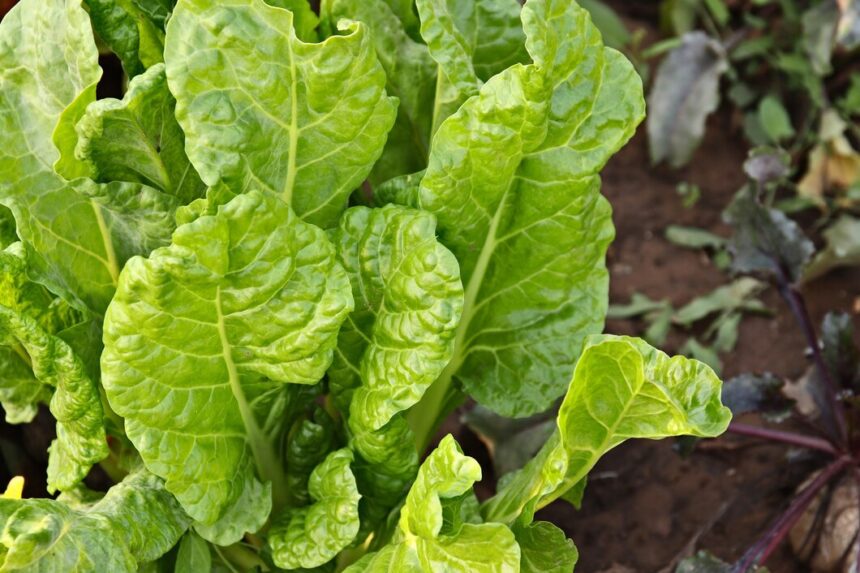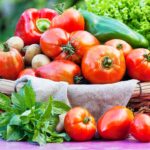Spinach (Spinacia oleracea) is a highly nutritious leafy green vegetable that thrives in South Africa’s diverse climates. It is known for its quick growth cycle, making it an attractive crop for farmers. This article provides a detailed guide on the entire process of growing spinach, from seed to harvest, including inputs, machinery, disease management, and storage.
1. Land Preparation
Effective land preparation sets the foundation for a successful spinach crop. Key steps include:
- Site Selection: Choose a site with well-draining soil, ideally loamy or sandy soil, with a pH between 6.0 and 7.0. Spinach prefers cooler temperatures but can grow in various climates.
- Soil Testing: Conduct a soil test to determine nutrient levels and pH. Based on the results, amend the soil with lime (to raise pH) or sulfur (to lower pH) as needed.
- Tilling and Plowing: Use a tractor with a plow or rotary tiller to break up the soil to a depth of 20-30 cm. This aerates the soil and incorporates organic matter.
- Fertilization: Incorporate well-rotted manure or compost to improve soil fertility. Additionally, apply a balanced fertilizer (N-P-K: Nitrogen-Phosphorus-Potassium) according to soil test recommendations.
2. Seed Selection and Planting
Choosing the right variety of spinach is crucial for successful growth. Options include smooth-leaf, savoy, and semi-savoy types.
- Seed Preparation: Before planting, soak seeds in water for 24 hours to improve germination rates.
- Planting Method: Spinach can be sown directly in the field or started in seed trays. For direct seeding, use a seed drill or hand seeder to plant seeds 1-2 cm deep and 15-30 cm apart in rows.
- Timing: In South Africa, spinach can be planted year-round, but the best times are early spring and late summer to avoid extreme temperatures.
3. Watering Requirements
Proper irrigation is essential for healthy spinach growth.
- Water Needs: Spinach requires approximately 25-30 mm of water per week, depending on climate conditions. Consistent moisture is crucial, especially during germination and early growth stages.
- Irrigation Methods: Use drip irrigation or overhead sprinklers to maintain even moisture. Avoid waterlogging, as spinach roots are sensitive to excess water.
4. Growth Stages
Spinach typically goes through the following growth stages:
- Germination (7-14 days): Seeds will germinate in 7 to 14 days, depending on temperature and moisture. Maintain consistent moisture levels during this period.
- Seedling Stage (2-4 weeks): After germination, seedlings develop true leaves. Thin seedlings to prevent overcrowding, ensuring adequate spacing of 10-15 cm between plants.
- Vegetative Stage (4-6 weeks): During this phase, spinach plants focus on leaf development. Apply a nitrogen-rich fertilizer to promote lush growth. Monitor for pests and diseases.
- Mature Stage (6-8 weeks): Spinach is ready for harvest when leaves are dark green and large. This usually occurs 6-8 weeks after planting, depending on the variety.
5. Fertilizers and Nutrient Management
- Fertilization Schedule: Apply a balanced fertilizer at planting and side-dress with nitrogen-rich fertilizers (e.g., urea) during the vegetative stage to encourage leafy growth.
- Organic Options: Consider using compost teas or liquid seaweed as organic fertilizers to enhance nutrient uptake and soil health.
6. Pest and Disease Management
Spinach is susceptible to various pests and diseases. Early identification and management are crucial.
- Common Pests:
- Aphids: Monitor for infestations, which can cause leaf curling and stunted growth. Introduce beneficial insects (e.g., ladybugs) or use insecticidal soap.
- Leaf Miners: Identify leaf mines on foliage. Remove affected leaves and apply neem oil or insecticides if necessary.
- Common Diseases:
- Downy Mildew: This fungal disease causes yellowing and wilting of leaves. Control with resistant varieties and fungicides, and practice crop rotation.
- Powdery Mildew: Fungal growth on leaves can be managed through proper spacing for airflow and the use of fungicides if needed.
- Herbicide Use:
- Apply pre-emergent herbicides before planting to control weeds. Post-emergent herbicides can be used to target specific weeds after spinach emergence, ensuring proper label adherence.
7. Harvesting Spinach
- Timing: Harvest spinach when leaves are young and tender, typically 6-8 weeks after planting.
- Methods: Use a sharp knife or scissors to cut leaves, leaving the base intact for potential regrowth. Harvest in the morning to minimize wilting.
8. Post-Harvest Handling and Storage
- Cleaning: Gently wash spinach leaves to remove soil and debris.
- Storage Conditions: Store spinach in a cool, dark place or refrigerate at temperatures between 0-4°C to prolong freshness. Properly packaged spinach can last up to a week in the refrigerator.
- Processing: Consider blanching and freezing excess spinach to preserve its nutritional value and prevent spoilage.
Growing spinach from seed to harvest involves careful planning, proper management, and timely interventions. By following these steps and understanding the inputs, machinery, and potential challenges, South African farmers can successfully cultivate spinach, contributing to food security and economic stability. Continuous learning and adaptation to local conditions will further enhance productivity and sustainability in spinach farming.
Join 'Farmers Mag' WhatsApp Channel
Get the latest Farming news and tips delivered straight to your WhatsApp
CLICK HERE TO JOIN






